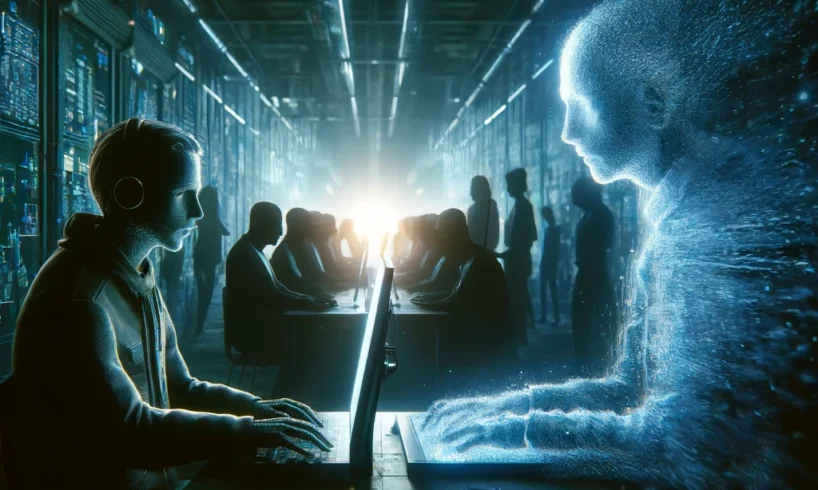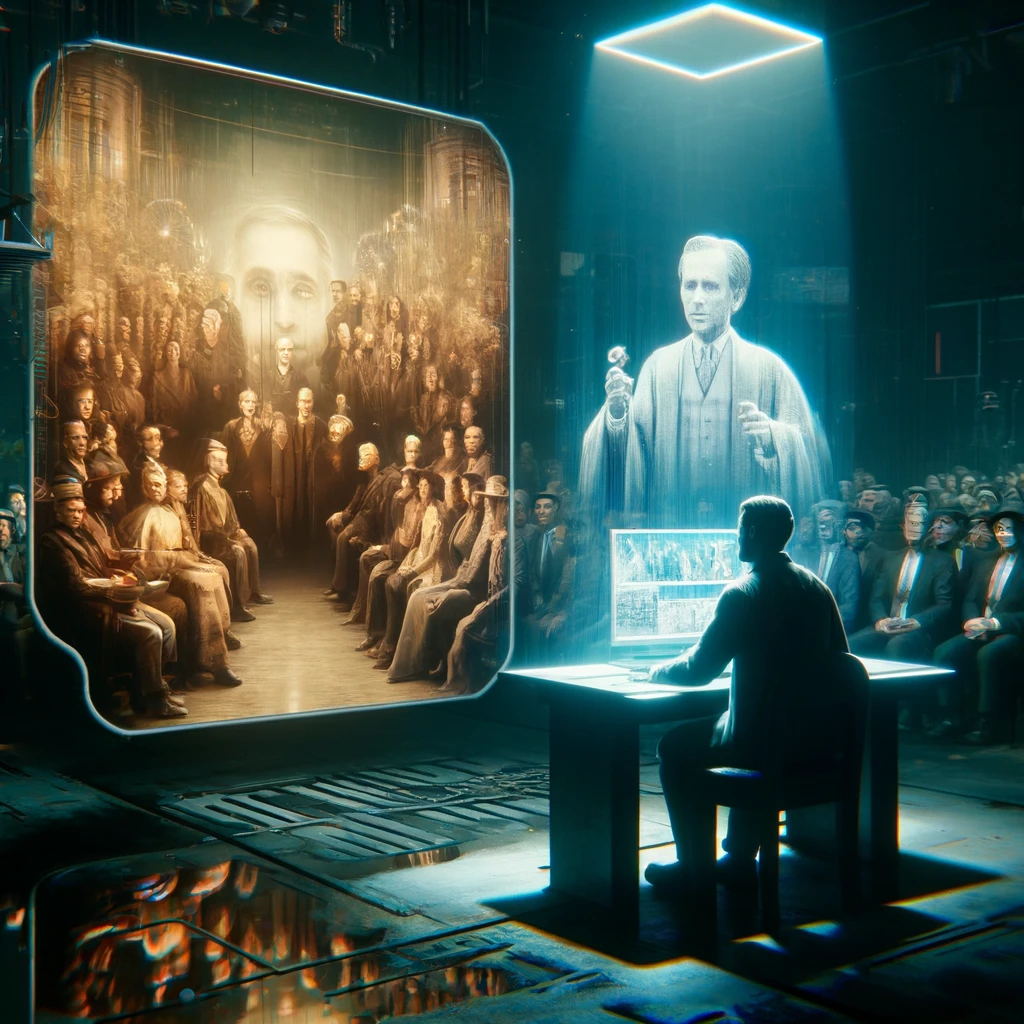
Altered images and videos are nothing new. Photoshop professionals, movie makers, and enthusiasts have blurred the lines between reality and fiction for decades. People have been slicing and dicing videos to change the tone and meaning of the message for as long as the media has existed.
However, while creating convincing images and videos with traditional media takes some skill and understanding, deepfake technology is shifting the goalposts. Today, anyone with minimal expertise and a laptop can take video, audio, and image fakery to a new level.
With just a few clicks of a mouse, your likeness can be circulating the internet, doing and saying things you wouldn’t dream of doing in real life.
Deepfakes have the potential to do good, such as how the technology was used to create a young Luke Skywalker in the latest Star Wars films, but they also have the potential to do great harm. A few well-placed deepfakes can ruin reputations, spread misinformation, and alter public opinion.
In this article, we examine the impact that deepfakes will have on society as the technology becomes more advanced and accessible to the masses.
Definition of a Deepfake
We’ve all been exposed to images and videos that cleverly alter reality, so what makes a deepfake different from what we’re used to seeing?
Deepfakes are more than technical wizardry and special effects because they rely on artificial intelligence to alter images, videos, and audio to make them appear authentic.
AI generates new content by synthesizing existing content to create realistic-looking faces and convincing audio. It seamlessly overlaps one person’s likeness onto another to show them doing and saying things that never happened.
The term deepfake is a portmanteau of “deep learning,” a subset of AI, and the term “fake” indicates the content is not accurate.
While deepfake algorithms first emerged in early 2010, the term didn’t become attached to synthetic media until 2017, when a Reddit moderator calling themselves “deepfakes” started sharing content that inserted celebrities’ likenesses into pornographic content.
Technological Evolution of Deepfakes
The first deepfake algorithms emerged around 2010 when researchers began developing techniques to swap faces in videos. However, the development of more advanced neural network architectures like Generative Adversarial Networks (GANs) around 2014 significantly enhanced the capabilities of deepfake technology.
GANs work by pitting two neural networks against each other – a generator network that creates fake content and a discriminator network that tries to detect the fakes. As the two networks compete, the generator network becomes increasingly skilled at producing highly realistic deepfakes that can fool even human observers.
As deepfake algorithms became more sophisticated, the technology became more accessible to the general public. The emergence of user-friendly deepfake apps and software allowed anyone with a smartphone to create convincing fake videos and images.
Deepfakes proliferated, flooding the web with everything from humorous memes and comedic parodies to malicious and harmful media with the potential to destroy lives and reputations.

The Growth and Accessibility of Deepfake Technology
Reports suggest an alarming growth of online deepfake content, with the number of deepfake videos almost doubling every six months. A report by DeepMedia estimated that around 500,000 video and voice deepfakes were circulating online in 2023. Projections have estimated that this number will grow to 8 million by 2025.
The numbers are alarming enough, but the usage pattern is perhaps the most disturbing. More than 95% of deepfakes display non-consensual adult content, with celebrities and other public figures portrayed in pornographic content without their permission.
While explicit deepfakes are the most prevalent, there is a growing segment of deepfakes targeting political misinformation. These only account for around 2% of deepfakes circulating, but the volume will increase as technology becomes more accessible to the masses.
Despite the widespread use of deepfakes, public awareness remains disturbingly low. A worldwide survey indicates that 71% of people don’t know what a deepfake is. Of those that do, only 57% believe they can recognize one.
Pew Research Centre reports that almost 80% of Americans believe that deepfake use should be limited, but just under 22% could recognize one correctly. [source]
How Deepfakes Can Influence Society
While deepfakes can make the internet a better place and have been used as such, there are always bad actors who will be attracted to the technology for nefarious purposes, including:
Misinformation and Propaganda: Societies worldwide have been subjected to propaganda campaigns for centuries, but deepfake technology means it’s never been a more straightforward process. When in the wrong hands, the technology can be used to sway public opinion on important social and geopolitical issues. Deepfakes have also been employed to manipulate election outcomes and undermine public trust in institutions and world leaders.
Legal and Ethical Concerns: Non-consensual use of likenesses raises legal and ethical concerns. We all have the right to control the use of our voice, likenesses, and personal data. However, deepfakes enable unauthorized appropriation and exploitation of these attributes, increasing instances of privacy violations, reputational damage, and emotional distress.
Vulnerable Groups: Women and minorities are at a higher risk of being targeted by deepfake pornography and harmful content. The absence of clear laws for these violations has left many victims without proper recourse.
The advance of technology often outpaces the laws designed to protect society against its malicious use. However, legislatures worldwide are drafting laws targeting the harmful distribution and use of deepfakes. Several US states have already enacted laws prohibiting non-consensual use of the technology, mainly involving elections and explicit content.
Deepfake Potential Benefits
Deepfake technology can produce incredibly realistic synthetic media. Understandably, its potential for harm is receiving a lot of attention. However, deepfakes offer plenty of potential benefits despite concerns about manipulation and misinformation.
Deepfakes offer myriad possibilities in creative endeavors such as film and art when used expressively. Movie directors can bring long-dead actors back to life, add decades of life to young actors, and remove the same from older performers.
Educators could use deepfakes to deliver more engaging educational content by reconstructing key moments in history or delivering lectures through lifelike simulations. For example, a deepfake of Salvador Dali hosted the Dali Museum in Florida.
Deep learning algorithms can analyze medical scans in great detail, allowing them to detect signs of disease that humans would miss. The improved diagnostic capabilities and speed can potentially improve the scope and availability of medical services to the general public.
Deepfake technology algorithms can assist with more natural and accurate translations, breaking down language barriers to enhance global communication.
When used for society’s benefit, deepfakes can help create realistic virtual assistants and chatbots that can understand and respond to human speech with realistic and logical responses. This could lead to more effective customer service, personalized learning tools, and virtual companionship.
The rise of deepfake technology presents a double-edged sword. While it offers significant advancements and possibilities in creative and technological fields, it also poses substantial challenges to societal norms, privacy, and security. The development of detection tools and legal frameworks aims to mitigate these negative impacts. Still, the dynamic nature of this technology will require constant vigilance and adaptation by individuals, organizations, and governments alike.
Ashish K Saxena is a computer science engineer, published academic researcher, and writer whose work in each of these areas revolves around the efficient and ethical use of artificial intelligence. He strives to explore the crossroads of technology and the humanities, underscoring how social structures and interactions evolve alongside scientific innovation. Ashish focuses on making AI concepts accessible to the public and fostering a diverse, inclusive AI community. His career uniquely combines innovation, research, and storytelling, dedicated to the ethical development of AI technology. Discover more about Ashish’s work at mindbytesai.com. Follow him on social media at https://www.instagram.com/mindbytesai_ for more insights.






